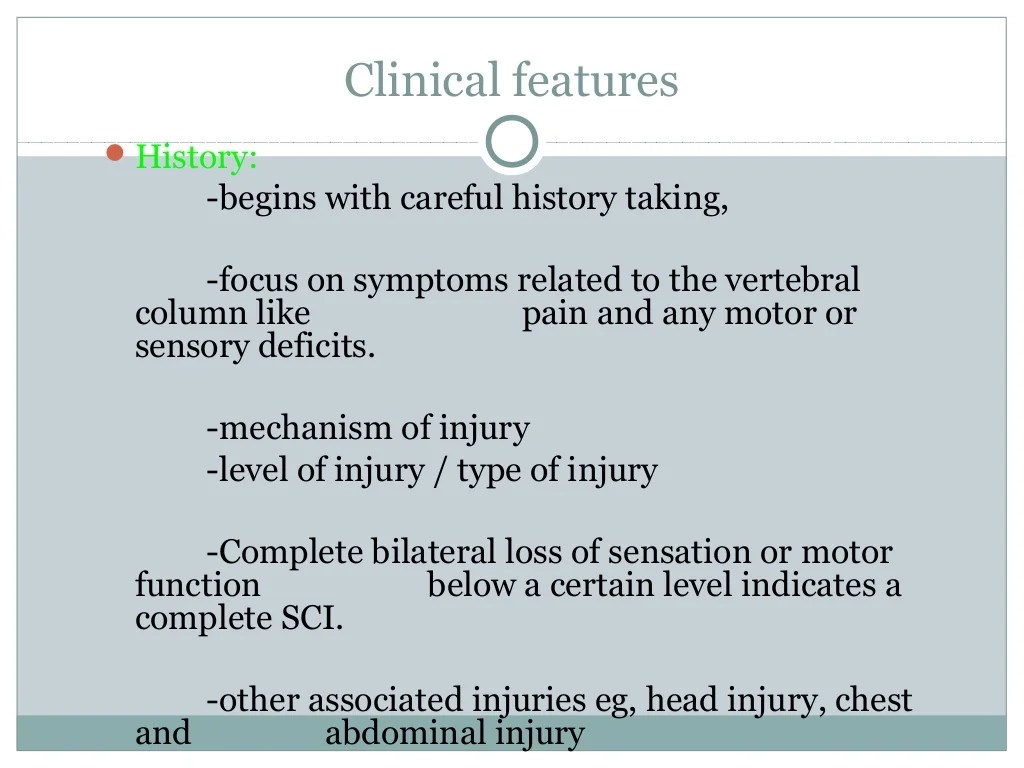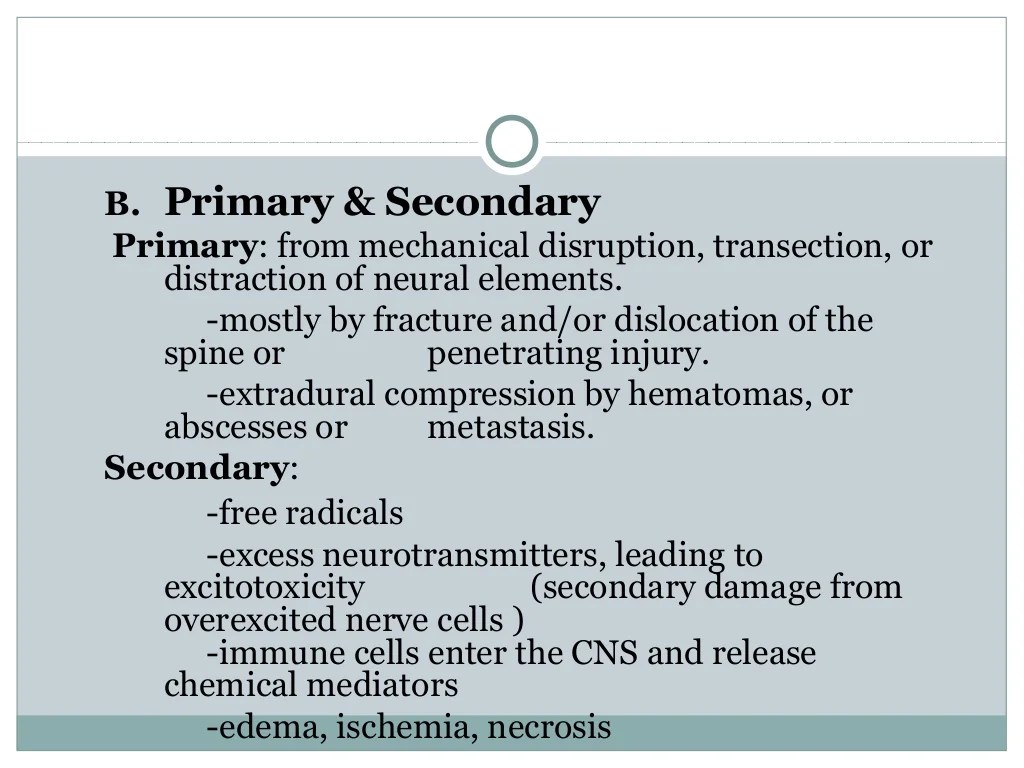Spinal cord injury hesi case study – Delve into the complexities of spinal cord injury with this comprehensive HESI case study, meticulously crafted to provide nurses with an immersive and educational experience. This case study unveils the intricacies of SCI, from its pathophysiology to management strategies, empowering nurses to deliver exceptional care to patients navigating this challenging condition.
Through a detailed examination of a patient’s journey, we explore the neurological impact, functional limitations, and rehabilitation process associated with spinal cord injury. This case study serves as an invaluable resource, equipping nurses with the knowledge and skills necessary to effectively support patients and their families throughout their recovery.
Introduction
Spinal cord injury (SCI) is a devastating condition that can have a profound impact on an individual’s life. It is defined as damage to the spinal cord, which is a bundle of nerves that runs from the brain down the back.
SCI can occur at any level of the spinal cord, and the severity of the injury will depend on the location and extent of the damage.
SCI is a relatively common condition, with an estimated 17,000 new cases occurring each year in the United States. The most common cause of SCI is motor vehicle accidents, followed by falls and sports injuries. Other causes of SCI include gunshot wounds, diving accidents, and medical errors.
Pathophysiology of SCI
The pathophysiology of SCI is complex, but it can be generally divided into two phases: primary and secondary injury.
- Primary injuryoccurs at the moment of impact and is caused by the direct mechanical damage to the spinal cord. This damage can result in contusion, laceration, or transection of the spinal cord.
- Secondary injuryoccurs in the hours and days following the primary injury and is caused by a cascade of biochemical and cellular events that lead to further damage to the spinal cord. These events include inflammation, edema, and ischemia.
The severity of the SCI will depend on the extent of the primary and secondary injury. Complete SCI occurs when there is a complete loss of motor and sensory function below the level of the injury. Incomplete SCI occurs when there is some degree of motor and sensory function below the level of the injury.
Impact on Neurological Function
SCI can have a profound impact on neurological function. The specific effects of the injury will depend on the location and severity of the injury. However, common symptoms of SCI include:
- Paralysis
- Loss of sensation
- Difficulty breathing
- Bowel and bladder problems
- Sexual dysfunction
SCI can also lead to a number of other complications, including pressure sores, infections, and chronic pain. These complications can further impair an individual’s quality of life and make it difficult to live independently.
Case Study: Spinal Cord Injury

Patient Demographics
The patient is a 25-year-old male who sustained a spinal cord injury in a motor vehicle accident.
Medical History
The patient has no significant past medical history.
Injury Description
The patient was the driver of a car that was struck from behind by a semi-trailer truck. The patient was ejected from the car and landed on his head. He was unconscious at the scene of the accident and was intubated and ventilated.
He was transported to the hospital, where he underwent surgery to stabilize his cervical spine.
Neurological Examination Findings
The patient is awake and alert. He has complete paralysis below the level of C5. He has no sensation below the level of C5. He has a positive Babinski sign on the right side and a negative Babinski sign on the left side.
Functional Status
The patient is unable to walk or stand. He is unable to use his arms or hands. He is unable to control his bladder or bowels.
Management of Spinal Cord Injury

Spinal cord injury (SCI) management aims to preserve neurological function, prevent complications, and maximize rehabilitation potential. A comprehensive approach involving stabilization, surgical intervention, medical management, and rehabilitation is crucial for optimal outcomes.
Stabilization and Immobilization
Immediate stabilization and immobilization are vital to prevent further damage to the spinal cord. This involves:
- Manual in-line stabilization by trained personnel
- Application of a rigid cervical collar or spinal board
- Log rolling techniques to move the patient safely
Surgical Intervention
Surgical intervention may be necessary to:
- Decompress the spinal cord by removing bone fragments or hematomas
- Stabilize the spine using rods, screws, or plates
- Repair damaged nerve tissue
Medical Management, Spinal cord injury hesi case study
Medical management focuses on preventing complications and promoting healing:
- Pain management
- Antibiotics to prevent infection
- Bladder and bowel management
- Nutritional support
Rehabilitation
Rehabilitation plays a crucial role in maximizing functional recovery and improving quality of life. It involves:
- Physical therapy to improve mobility and strength
- Occupational therapy to enhance daily living skills
- Speech therapy to address communication difficulties
- Psychological support to manage emotional and cognitive challenges
Rehabilitation of Spinal Cord Injury
Rehabilitation is a crucial aspect of spinal cord injury (SCI) recovery, as it aims to maximize the patient’s functional abilities, improve quality of life, and promote independence.Rehabilitation therapies for SCI patients encompass a multidisciplinary approach, involving a team of healthcare professionals such as physical therapists, occupational therapists, speech-language pathologists, and physiatrists.
The rehabilitation process typically begins in the acute phase of SCI and continues throughout the patient’s lifetime, with the intensity and focus of rehabilitation varying depending on the individual’s needs and recovery trajectory.
Goals and Expected Outcomes of SCI Rehabilitation
The goals of SCI rehabilitation are to:
- Restore or improve motor and sensory function
- Increase mobility and independence
- Enhance self-care abilities
- Improve cognitive and psychological well-being
- Promote social reintegration and community participation
Expected outcomes of SCI rehabilitation vary widely depending on the severity and location of the injury, as well as the individual’s age, overall health, and commitment to the rehabilitation process. However, with comprehensive and consistent rehabilitation, many SCI patients can achieve significant improvements in their functional abilities and overall quality of life.
Complications of Spinal Cord Injury
Spinal cord injury (SCI) can lead to a range of complications that can significantly impact a patient’s quality of life. These complications can affect various aspects of the patient’s physical, cognitive, and emotional well-being.
Early identification and management of complications are crucial to prevent further deterioration and improve patient outcomes. Healthcare professionals play a vital role in assessing, monitoring, and implementing strategies to mitigate the risks and effects of these complications.
Prevention and Management
Preventing and managing complications associated with SCI involves a multidisciplinary approach. It includes regular medical check-ups, rehabilitation therapies, patient education, and lifestyle modifications.
- Regular Medical Check-ups:Regular medical check-ups allow healthcare professionals to monitor the patient’s overall health, assess for any signs of complications, and provide timely interventions.
- Rehabilitation Therapies:Rehabilitation therapies, such as physical therapy, occupational therapy, and speech therapy, can help improve mobility, function, and communication, reducing the risk of complications related to immobility and inactivity.
- Patient Education:Patient education is essential for empowering individuals with SCI to understand their condition, manage their symptoms, and prevent complications. Education programs cover topics such as proper nutrition, skin care, bowel and bladder management, and medication adherence.
- Lifestyle Modifications:Lifestyle modifications, such as maintaining a healthy weight, engaging in regular physical activity, and quitting smoking, can contribute to overall well-being and reduce the risk of developing certain complications.
Nursing Care for Spinal Cord Injury: Spinal Cord Injury Hesi Case Study
Nurses play a pivotal role in the comprehensive care of patients with spinal cord injuries (SCIs). Their expertise and dedication are essential in ensuring optimal outcomes and enhancing the quality of life for these individuals.
Specific Nursing Interventions
Nurses are responsible for implementing a range of specialized interventions tailored to the specific needs of SCI patients. These include:
- Neurological assessment:Regularly monitoring neurological status, including motor and sensory function, to detect any changes or complications.
- Skin care:Preventing and managing pressure ulcers, which are a common complication in SCI patients due to impaired mobility.
- Bladder and bowel management:Assisting patients with bladder and bowel function, which can be affected by SCI, through techniques such as intermittent catheterization or bowel programs.
- Respiratory care:Monitoring and managing respiratory function, as SCI can impact breathing and require interventions like suctioning or mechanical ventilation.
- Pain management:Assessing and managing pain, which is a common symptom of SCI, through various methods such as medication, physical therapy, or nerve blocks.
Importance of Patient Education and Support
Patient education and support are crucial aspects of nursing care for SCI patients. Nurses provide comprehensive information about the injury, its potential consequences, and self-management strategies. They also offer emotional support, assist with coping mechanisms, and connect patients with resources and support groups.
Empowering SCI patients with knowledge and support enhances their ability to participate actively in their recovery and rehabilitation, leading to improved outcomes and a better quality of life.
Conclusion
Spinal cord injury (SCI) is a life-changing event with significant implications for patients and their families. The key points of this article are as follows:
- SCI can result in a wide range of disabilities, depending on the severity and location of the injury.
- Management of SCI involves a multidisciplinary approach, including medical, surgical, and rehabilitative interventions.
- Rehabilitation plays a crucial role in helping patients regain function and improve their quality of life.
- SCI can lead to various complications, including pressure sores, infections, and spasticity.
- Nursing care for patients with SCI focuses on preventing complications, promoting mobility, and providing emotional support.
Implications of SCI for Patients and Families
SCI can have a profound impact on the lives of patients and their families. Patients may experience physical, cognitive, and emotional challenges that can affect their daily functioning, employment, and relationships. Families may need to provide significant support and care for their loved ones, which can be both physically and emotionally demanding.
Importance of Ongoing Research and Advancements in SCI Management
Ongoing research and advancements in SCI management are essential for improving the outcomes for patients. New treatments and technologies are being developed to help prevent and repair spinal cord injuries, and to improve the quality of life for those living with SCI.
It is important to continue to invest in research and innovation to find new ways to help patients recover from SCI and live full and active lives.
FAQs
What is the most common type of spinal cord injury?
Tetraplegia, also known as quadriplegia, is the most common type of spinal cord injury, affecting all four limbs and the trunk.
What are the long-term effects of spinal cord injury?
Long-term effects of spinal cord injury can include paralysis, loss of sensation, chronic pain, and impaired bowel and bladder function.
What is the prognosis for spinal cord injury?
The prognosis for spinal cord injury varies depending on the severity of the injury. With early intervention and comprehensive rehabilitation, many patients can regain some function and live full and active lives.